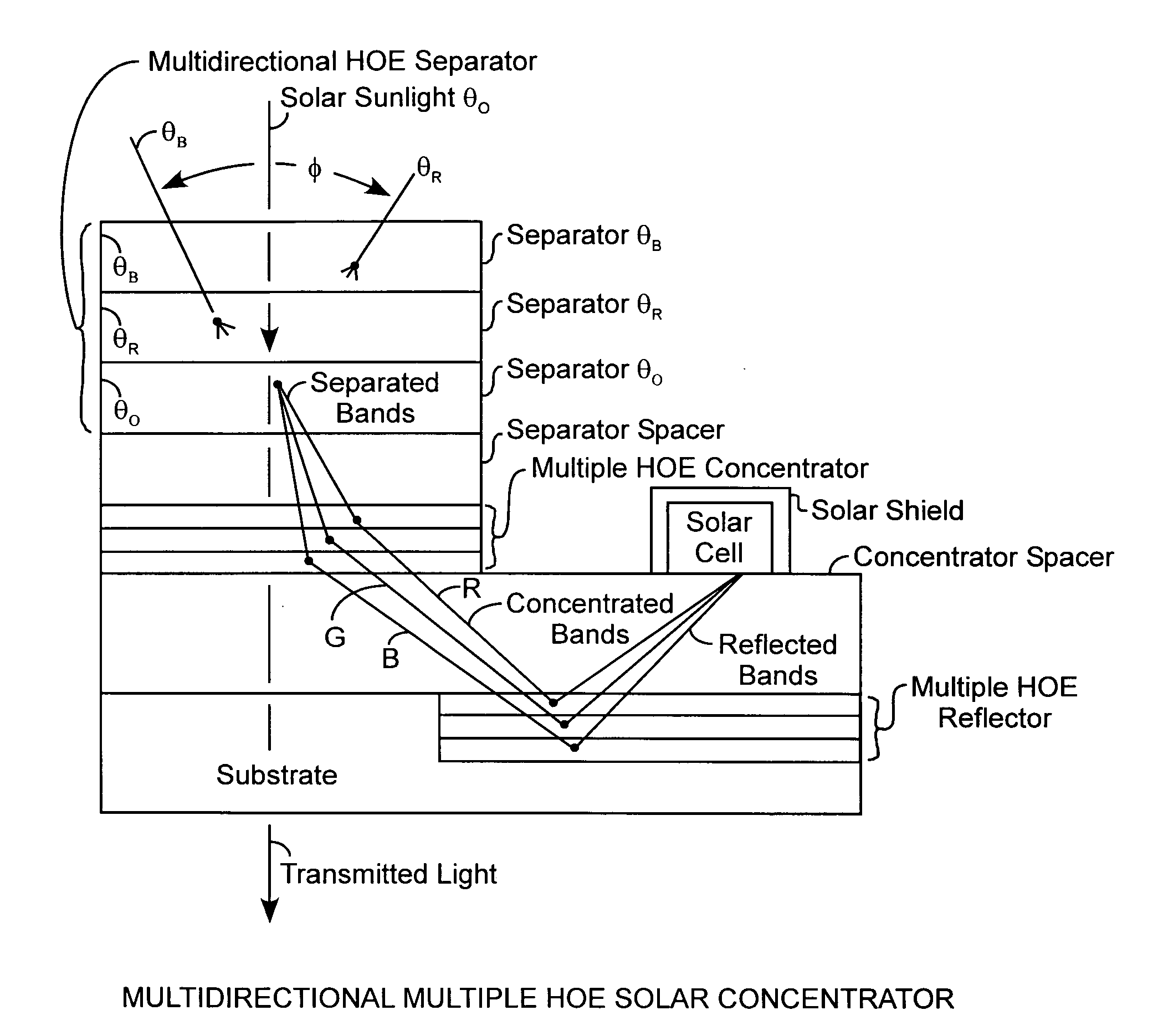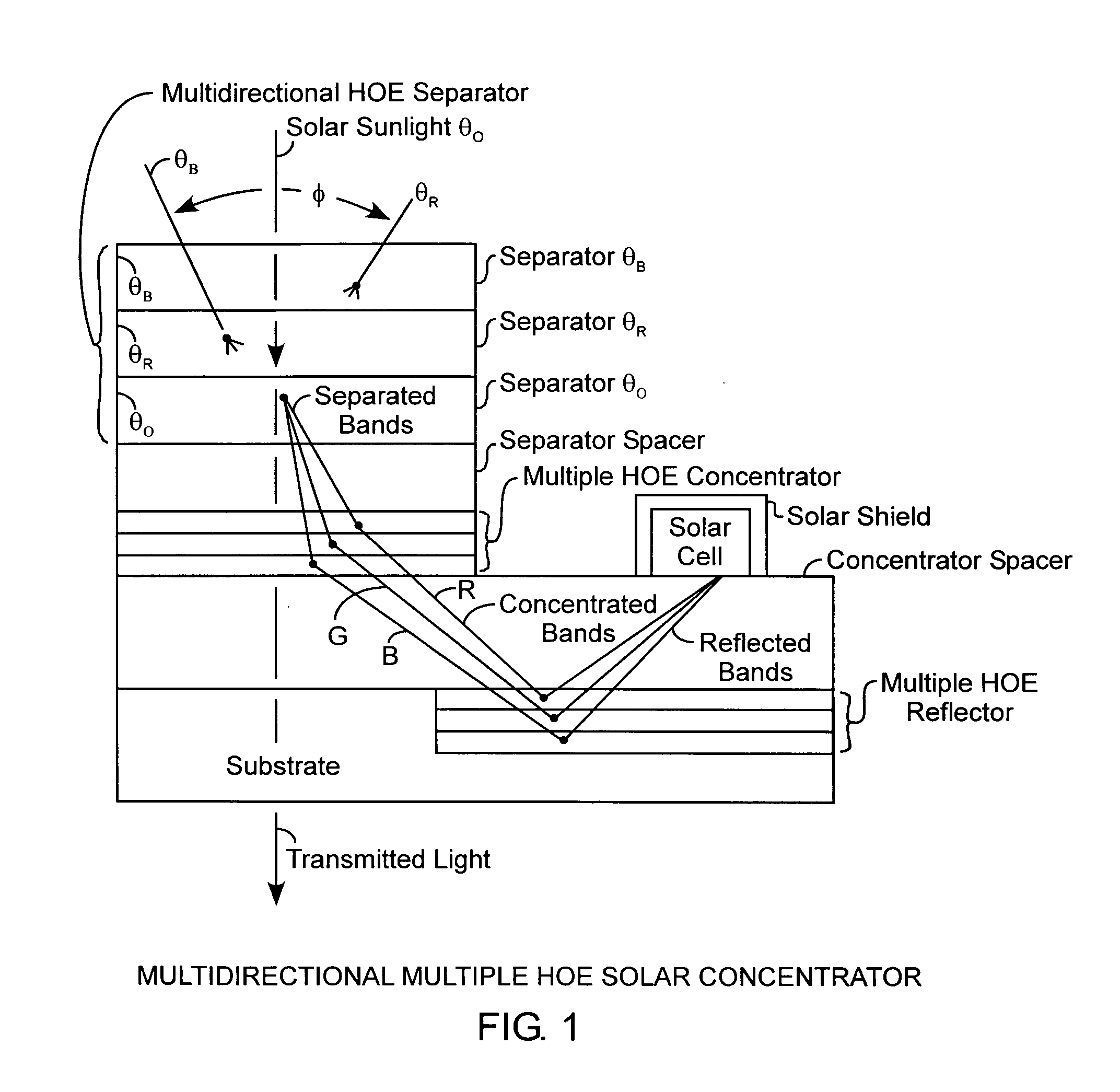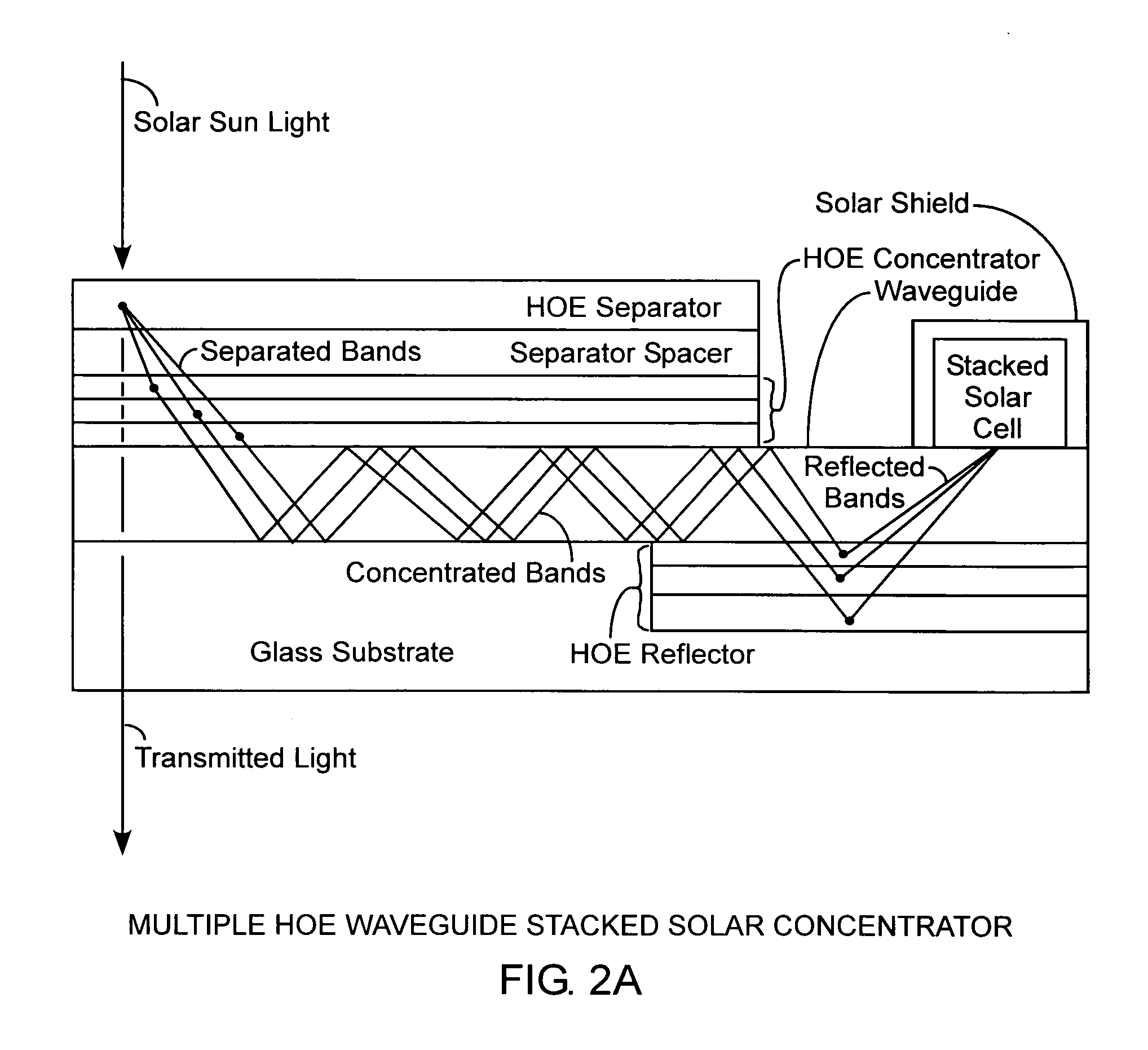Holographic solar concentrator
- Summary
- Abstract
- Description
- Claims
- Application Information
AI Technical Summary
Benefits of technology
Problems solved by technology
Method used
Image
Examples
Embodiment Construction
[0024]An embodiment of the invention is described with reference to the figures using reference designations as shown in the figures. Referring to FIG. 1, a multidirectional multiple holographic element (HOE) solar concentrator received solar sunlight by one or more HOE separators, such as HOE separators θB, θO, and θR for defining a field of view φ. The HOE separators θB, θO, and θR are collectively referred to as a multidirectional HOE separator, or simply the HOE separator. The HOE separator allows for the separation of the incident solar sunlight into separated optical bands. The separated bands are directed through a separator spacer to a multiple HOE concentrator having a plurality of individual respective HOE concentrators, each of which are for concentrating the separated bands into respective concentrated bands that may be for example blue, red, and green colored optical wavelength bands. Each of the HOE separators θB, θO, and θR can be multiplexed in the same hologram volu...
PUM
 Login to View More
Login to View More Abstract
Description
Claims
Application Information
 Login to View More
Login to View More - R&D
- Intellectual Property
- Life Sciences
- Materials
- Tech Scout
- Unparalleled Data Quality
- Higher Quality Content
- 60% Fewer Hallucinations
Browse by: Latest US Patents, China's latest patents, Technical Efficacy Thesaurus, Application Domain, Technology Topic, Popular Technical Reports.
© 2025 PatSnap. All rights reserved.Legal|Privacy policy|Modern Slavery Act Transparency Statement|Sitemap|About US| Contact US: help@patsnap.com



